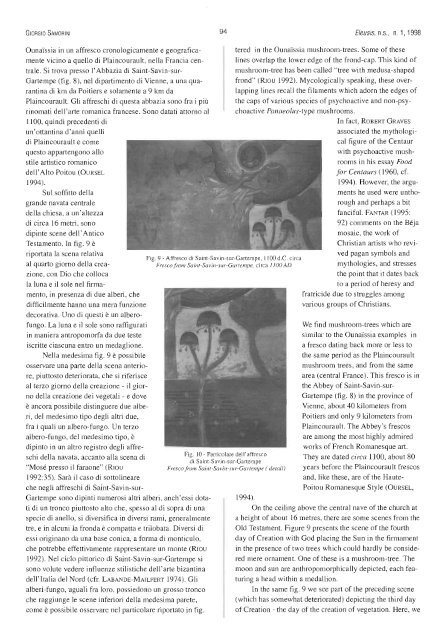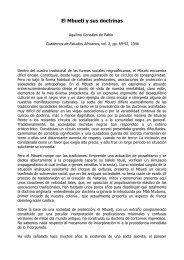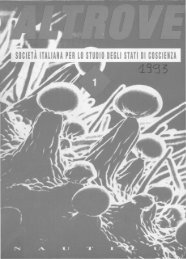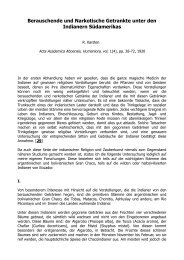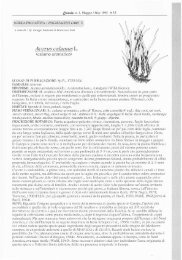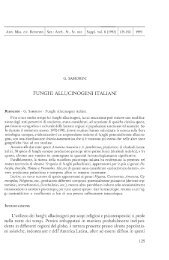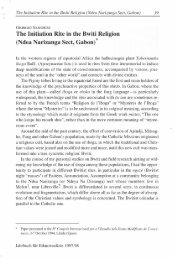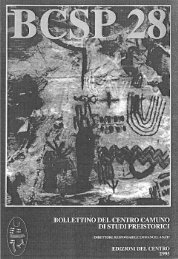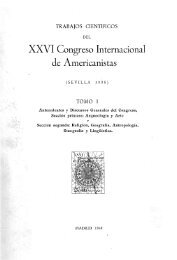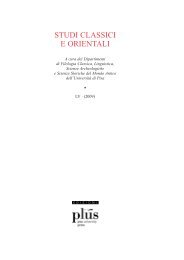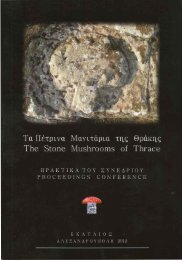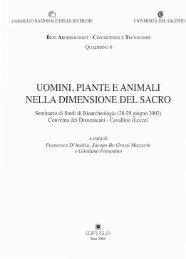Gli "alberi-fungo" nell'arte cristiana - Giorgio Samorini Network
Gli "alberi-fungo" nell'arte cristiana - Giorgio Samorini Network
Gli "alberi-fungo" nell'arte cristiana - Giorgio Samorini Network
Create successful ePaper yourself
Turn your PDF publications into a flip-book with our unique Google optimized e-Paper software.
94<br />
GIORGIO SAMORINI Eleusis, n.s., n. 1, 1998<br />
Ouna'jss ia in un affresco cronologicamente e geograficamente<br />
vicino a quello di Plaincourault, nella Francia centrale.<br />
Si trova presso l'Abbazia di Saint-Savin-sur<br />
Gartempe (fig. 8), nel dipartimento di Vienne, a una quarantina<br />
di km da Poitiers e solamente a 9 km da<br />
Plaincourault. <strong>Gli</strong> affreschi di questa abbazia sono fra i più<br />
rinomati del I ' arte romanica francese. Sono datati attorno al<br />
1100, quindi precedenti di<br />
un'ottantina d'anni quelli<br />
di Plaincourault e come<br />
questo appartengono allo<br />
stile artistico romanico<br />
del!' Alto Poitou (OURSEL<br />
1994).<br />
Sul soffitto della<br />
grande navata centrale<br />
della chiesa, a un'altezza<br />
di circa 16 metri, sono<br />
dipinte scene dell ' Antico<br />
Testamento. In fig . 9 è<br />
riportata la scena relativa<br />
al quarto giorno della creazione,<br />
con Dio che colloca<br />
la luna e il so le nel firmamento,<br />
in presenza di due <strong>alberi</strong>, che<br />
difficilmente hanno una mera fun zione<br />
decorativa. Uno di questi è un alberofungo.<br />
La luna e il sole sono raffigurati<br />
in maniera antropomorfa da due teste<br />
iscritte ciascuna entro un medaglione.<br />
Nella medesima fig. 9 è possibile<br />
osservare una parte della scena anteriore,<br />
piuttosto deteriorata, che si riferisce<br />
al terzo giorno della creazione - il giorno<br />
della creazione dei vegetali - e dove<br />
è ancora possibile distinguere due <strong>alberi</strong><br />
, del medesimo tipo degli altri due,<br />
fra i quali un albero-fungo. Un terzo<br />
albero-fungo, del medesimo tipo, è<br />
dipinto in un altro registro degli affreschi<br />
della navata, accanto alla scena di<br />
"Mosé presso il faraone" (Rlou<br />
1992:35). Sarà il caso di sottolineare<br />
che negli affreschi di Saint-Savin-sur-<br />
Gartempe sono dipinti numerosi altri <strong>alberi</strong>, anch'essi dotati<br />
di un tronco piuttosto alto che, spesso al di sopra di una<br />
specie di anello, si diversifica in diversi rami, generalmente<br />
tre , e in alcuni la fronda è compatta e trilobata. Diversi di<br />
essi originano da una base conica, a forma di monticulo,<br />
che potrebbe effettivamente rappresentare un monte (Rlou<br />
1992). Nel ciclo pittorico di Saint-Savin-sur-Gartempe si<br />
sono volute vedere influenze stilisti che dell'arte bizantina<br />
dell'Italia del Nord (cfr. LABANDE-MAILFERTI974).<strong>Gli</strong><br />
<strong>alberi</strong>-fungo, uguali fra loro, possiedono un grosso tronco<br />
che raggiunge le scene inferiori della medesima parete,<br />
come è possibile osservare nel particolare riportato in fig.<br />
Fig. 9 - Affresco di Saint-Savin-sur-Gartempe, 1100 d.C. circa<br />
Fresco from Sainl-Savin-sur-Garrempe. circa 1100 AD<br />
Fig. 10- Particolare dell ' affresco<br />
di Saint-Savin-sur-Gartempe<br />
Fresco from Sainl-Savin-sur-Garrempe ( deta;1)<br />
tered in the Ouna'iss ia mu shroom-trees. Some of these<br />
lines overlap the lower edge of the frond-cap. This kind of<br />
mu shroom-tree has been called "tree with medusa-shaped<br />
frond" (RJOu 1992). Mycologically speaking, these overlapping<br />
Iines recall the filaments which adorn the edges of<br />
the caps of various species of psychoactive and non-psychoactive<br />
Panaeolus-type mushrooms.<br />
In fact, ROBERT GRAVES<br />
associated the mythological<br />
figure of the Centaur<br />
with psychoactive mushrooms<br />
in his essay Food<br />
for Centaurs (1960, cf.<br />
1994). However, the arguments<br />
he used were unthorough<br />
and perhaps a bit<br />
fanciful. FANTAR (1995:<br />
92) comments on the Béja<br />
mosaic, the work of<br />
Christian artists who revived<br />
paga n symbols and<br />
mythologies, and stresses<br />
the point that it dates back<br />
to a peri od of heresy and<br />
fratricide due to struggles among<br />
various groups of Christians.<br />
We find mu shroom-trees which are<br />
si milar to the Ouna'jssia examples in<br />
a fresco dating back more or less to<br />
the same period as the Plaincourault<br />
mushroom trees, and from the same<br />
area (centrai France). This fresco is in<br />
the Abbey of Saint-Savin-sur<br />
Gartempe (fi g. 8) in the province of<br />
Vienne, about 40 kilometers from<br />
Poitiers and only 9 kilometers from<br />
Plaincourault. The Abbey 's frescos<br />
are among the most highly admired<br />
works of French Romanesque art.<br />
They are dated circa 1100, about 80<br />
years before the Plaincourault frescos<br />
and , Iike these, are of the Haute<br />
Poitou Romanesque StyJe (OURSEL,<br />
1994).<br />
On the ceiling above the centrai nave of the church at<br />
a height of about 16 metres, there are some scenes from the<br />
Old Testament. Figure 9 presents the scene of the fourth<br />
day of Creation with God plac ing the Sun in the firmament<br />
in the presence of two trees which could hardly be considered<br />
mere ornament. One of these is a mushroom-tree. The<br />
moon and sun are anthropomorphically depicted, each featuring<br />
a head within a medallion.<br />
In the same fig . 9 we see part of the preceding scene<br />
(which has somewhat deteriorated) depicting the third day<br />
of Creation - the day of the creation of vegetation. Here, we


